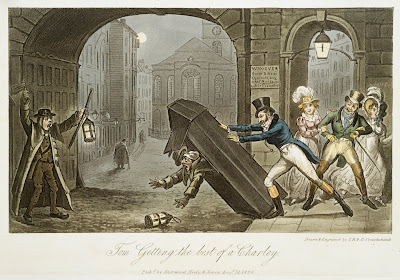The Epicure’s Almanack

Yes, I have a new research book…one I’m really enjoying. It’s The Epicure’s Almanack (1815) edited and annotated by Janet Ing Freeman. The introduction alone was nearly worth the rather hefty price. It included basic information I’d never known or understood before, such as what it means for a business to be a “house”, “tavern”, or “shop”. “Shops” don’t have designated space for eating, but are only for “take out”. “Taverns” (as opposed to public houses) are dedicated to wine, not beer and ale. Many—indeed it would appear most—coffee shops and pubic houses also kept rooms that people could hire, and were in fact, a form of inn or hotel. A few favorite tidbits: John o’Groat’s, near modern Piccadilly Circus, had tables laid ready for dining (cloths, silverware, glasses, and even had a priced menu on the table just like what we’re used to today. You could get a curry in London as early as 1773 (at the Mistress of Norris Coffee-House in Haymarket), and there was even a curry ho...







